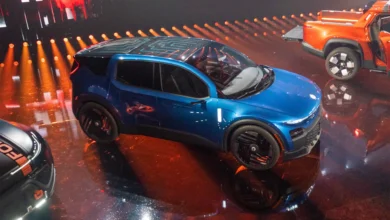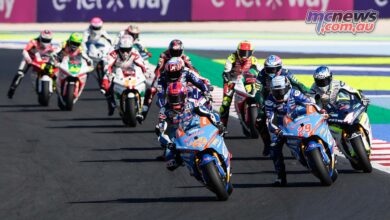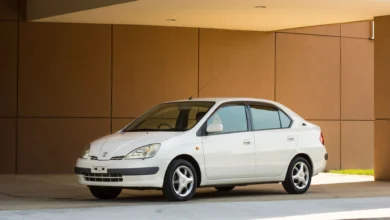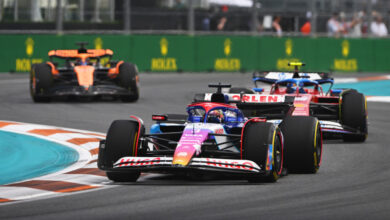Honda’s $100,000 Custom Cruiser, the Valkyrie Rune
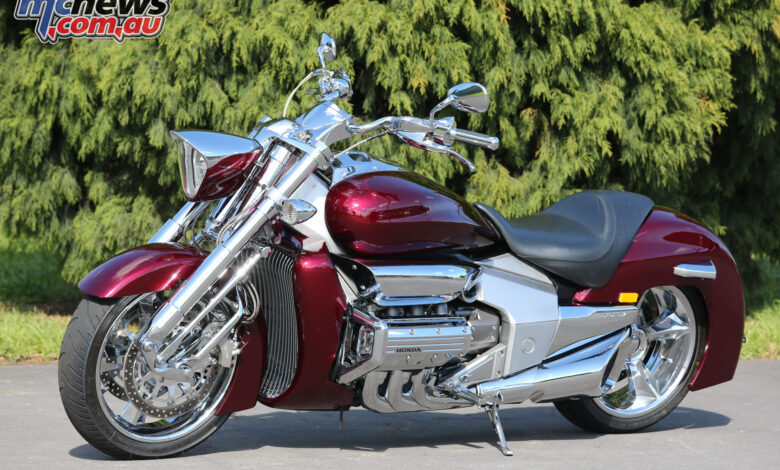
Honda Valkyrie Rune
With Ian Falloon
Of all the Japanese motorcycle companies, Honda has always had the most resources and ingenuity when it comes to testing the limits of expensive limited-run models. One of the most incredible was the NR750 oval piston bike of 1992, and another was the amazing Valkyrie Rune a decade later.
The Rune was developed from the Zodiac concept bike designed by Honda Japan, shown at the 1995 Tokyo show. The Zodiac was a V-Twin, and the immediate problem is that any V-Twin cruiser, no matter how good, is always going to be accused of trying to be a Harley.

But the Zodiac was styled in a completely new way, with a prominent trailing-link fork and Honda Research America taking inspiration to create a special custom cruiser. Their forte wasn’t in V-twins, but in the Gold Wing and Valkyrie flat-sixes.
The Rune proved to be a challenge for Honda engineers, who had to create a working bike from a styling concept. The Rune (which means “mystery” or “secret” in ancient Anglo-Saxon) was codenamed the NRX1800 and evolved from four concept bikes overseen by Honda’s American motorcycle design director Martin Manchester.
The T1 (Valkyrie hotrod) was shown at the 2000 Long Beach World Bike Show, followed by the T2 (classic custom), T3 (street racer), and then the T4. The T2 became the basis for the production Rune that appeared in 2004.

Powered by the same 1832cc, single overhead camshaft Gold Wing engine, but with six 32mm throttle bodies instead of two, a new camshaft, and a redesigned ignition system, the Rune produces 118 horsepower and 123 lb-ft of torque.
The Rune has a Gold Wing engine with serious attitude and performance. Although most don’t get ridden far, the Rune is also designed for long service intervals; 50,000 km for the first valve adjustment. A hydraulic clutch, chain-driven camshaft and shaft drive all help keep maintenance down.
The frame incorporates a number of distinctive features. The 1995 Zodia concept bike was inspired by an unusual trailing-link front fork, with twin shock absorbers actuated by a pushrod and linkage.
This creates the illusion of a chopper-style front suspension tilt while maintaining conventional steering geometry. The forks are a forged unit, with expensive bushings and dampers.
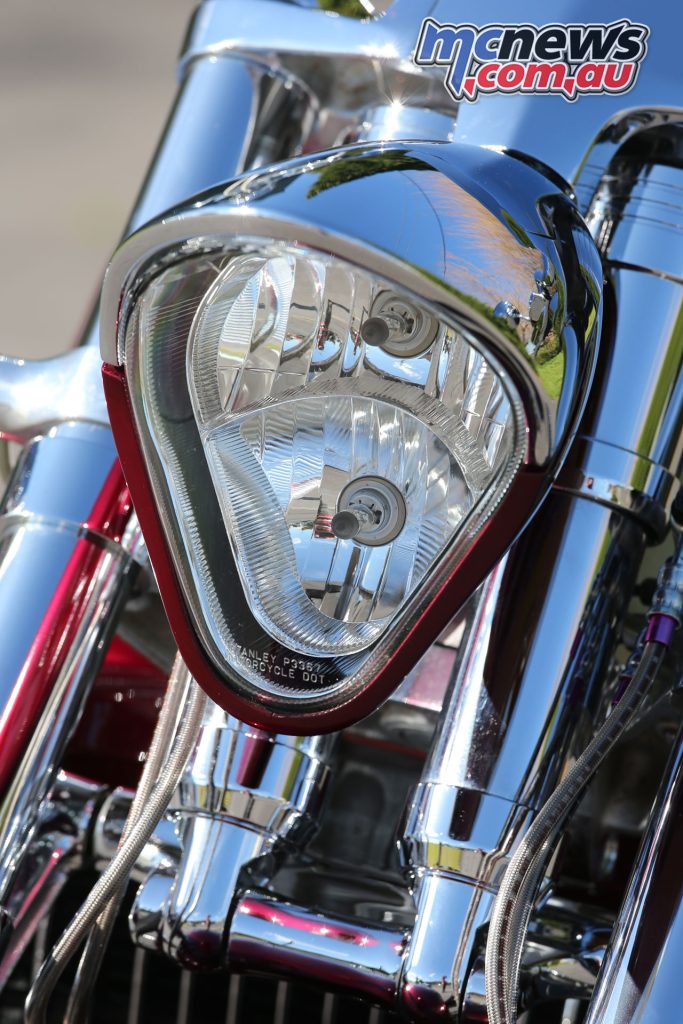
The Pro-Link rear suspension consists of a single-sided swingarm and monoshock, the upper mount of the horizontal shock absorber is located inside the swingarm rather than in the chassis, similar to the RC211V MotoGP race bike.
Spoked wheels (optionally chromed) are available in 18 and 17-inch sizes, and the triple disc braking system includes the VTX1800’s Combined Braking System. And clever engineering has seen the 330mm discs fitted with three-piston calipers and two firm thumbs are all it takes to stop this monster.
Even the chrome radiator, reminiscent of a 1932 Ford, was designed to complement the styling, but had to please the engineers. The designers found a radiator that looked right and fit the space, but the engineers found that the radiator moved about 20% of the BTUs they needed to handle.
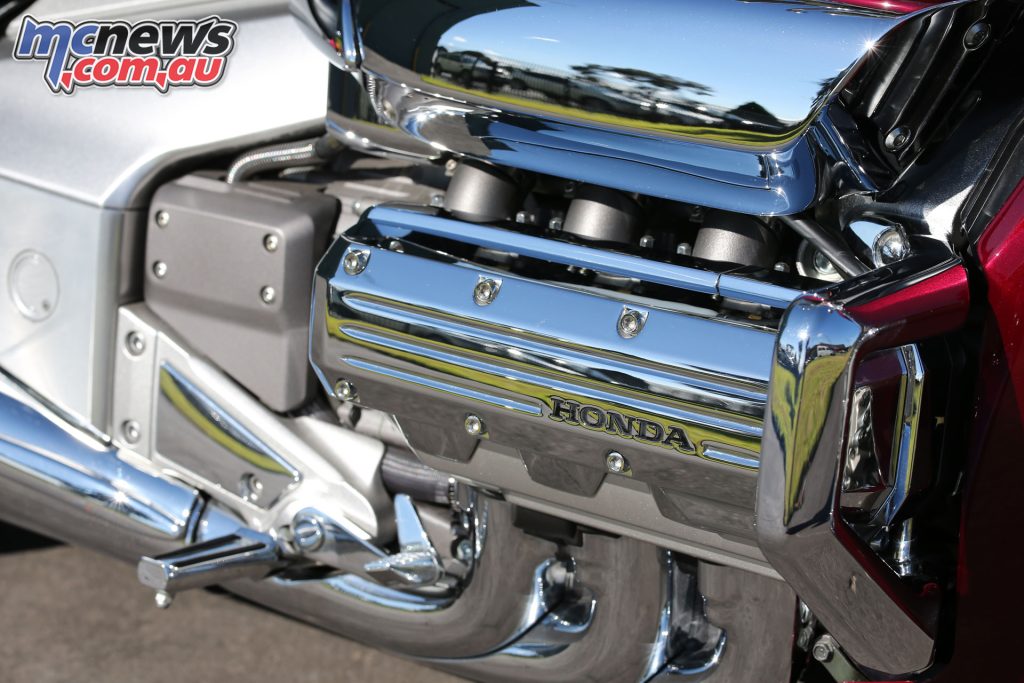
The engineers wanted a larger radiator, but because the shape and placement of the components were so important, they had to create a more efficient radiator with complex curves that satisfied the designers and met Honda’s exacting standards for cooling. That scenario was repeated for almost every part of the motorcycle.
In most cases, the designers achieved their goals and the engineers devised technology to meet Honda’s vision and technical and functional requirements.
The frame is an aluminium beam, and everything is finished to an impeccable standard. From the 1750mm wheelbase to the 350kg dry weight, the Rune is a big bike. While the handling is surprisingly good for such a big machine, the Rune’s main appeal is its looks.
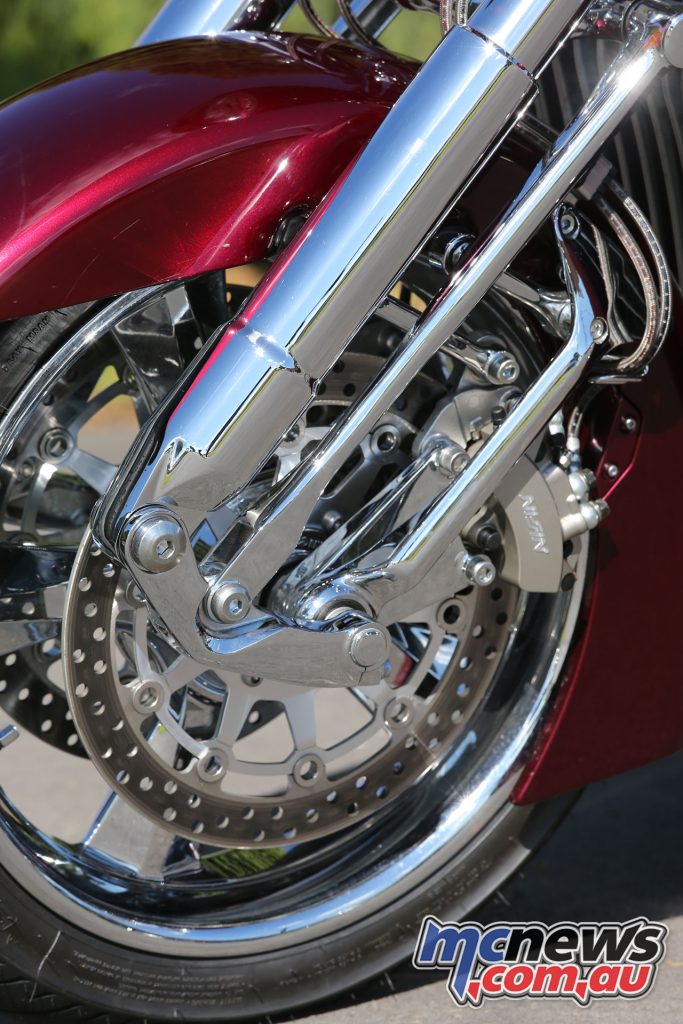
This is a custom bike with the fit and finish of a quality production machine. The finish is absolutely stunning. There are very few custom bike builders in the world that can match, let alone surpass, the quality of the chrome and paint on the Rune.
It’s amazing that a company as big as Honda was able to take the Rune past the concept car stage, taking the time (six years) and effort to build a limited edition mobile work of art.
What’s also remarkable is that Honda lets its designers break free from conventional molds and that designers can spread their wings and fly perfectly when they break free from those molds.
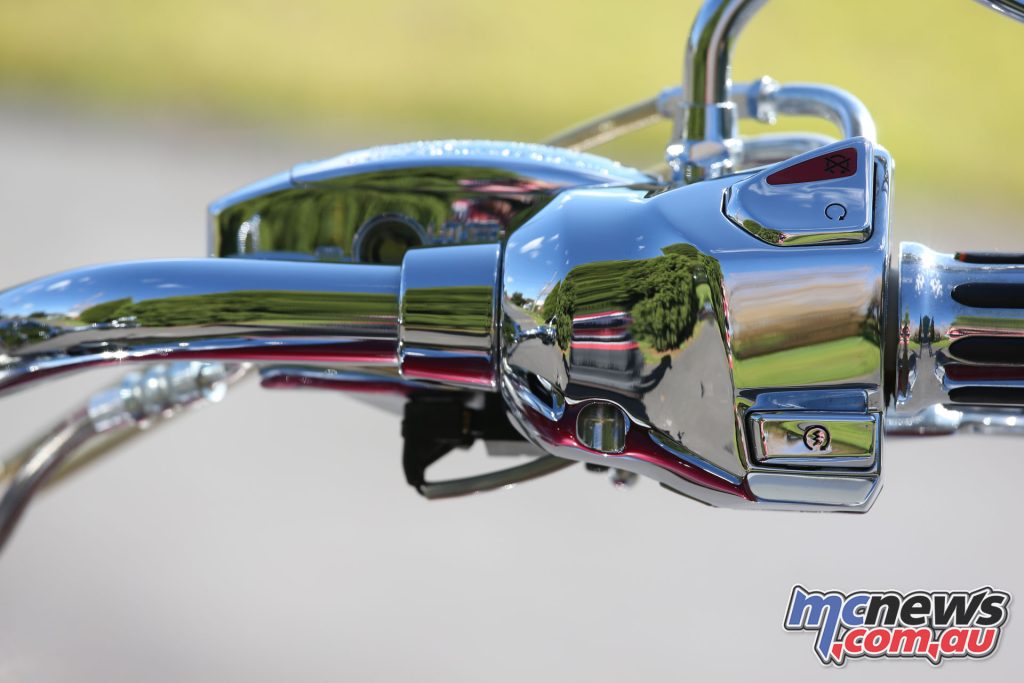
As far as production bikes go, it’s in a class of its own. The Rune is a very special bike and deserves to be appreciated for what it is: a true engineering masterpiece and a huge tribute to Honda’s engineering prowess – not to mention their willingness to lose money on a prestige project.
Under the direction of Major Project Leader Masanori Aoki, the Rune is envisioned as a limited-production, expensive ($24,490) piece of rolling art. There will be around 1,200 bikes in total, one for each Honda dealer in the United States.
Each Rune that leaves the American Honda plant in Marysville, Ohio, costs the company $100,000 – and sells for a quarter of that price.

Honda Rune Specifications
| Honda Rune Specifications | |
| Engine | Liquid-cooled, four-stroke, six-cylinder, SOHC, 2 valves per cylinder |
| Capacity | 1832cc |
| Piston diameter x stroke | 74 x 71mm |
| Compression ratio | 9.8:1 |
| Instruct | PGM-FI |
| Ignition | Digital control computer |
| Begin | Electricity |
| Maximum capacity | 86 kW / 118 hp @ 5500 rpm |
| Maximum torque | 167 Nm / 120.9 lb-ft at 4000 rpm |
| Clutch | Hydraulic, wet, multi-disc with coil spring |
| Transmission process | Five speeds |
| The Last Drive | Axis |
| Front suspension | Non-adjustable lower shock absorber, 100 mm travel |
| Rear suspension | Non-adjustable Pro-link monoshock, 100 mm travel |
| Front brake | Dualwe 330mm fully floating brake discs, three-piston calipers |
| Rear brake | Single 336 mm disc, two piston |
| Tire | 150/60 R18 (Front), 180/55 R17 (Rear) |
| The standard long | 1750mm |
| Seat height | 691mm |
| Dry weight | 367kg |
| Fuel quantity | 23.5 liters |
| Max speed | 198 km |
